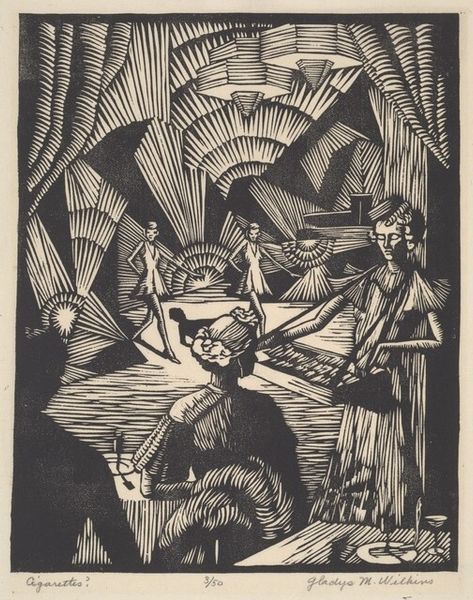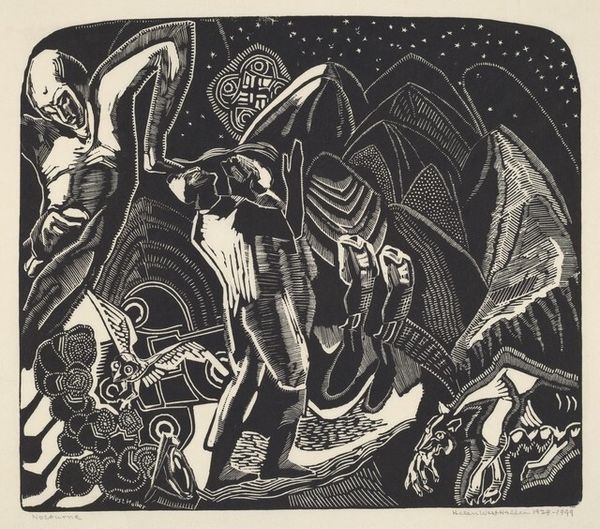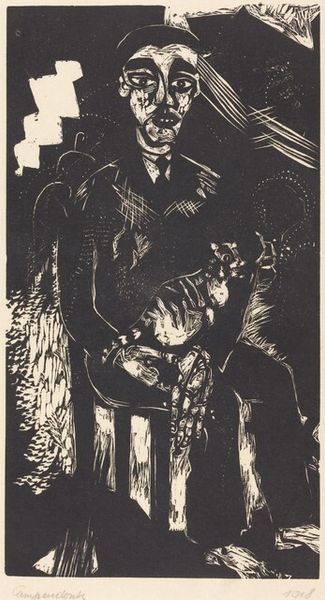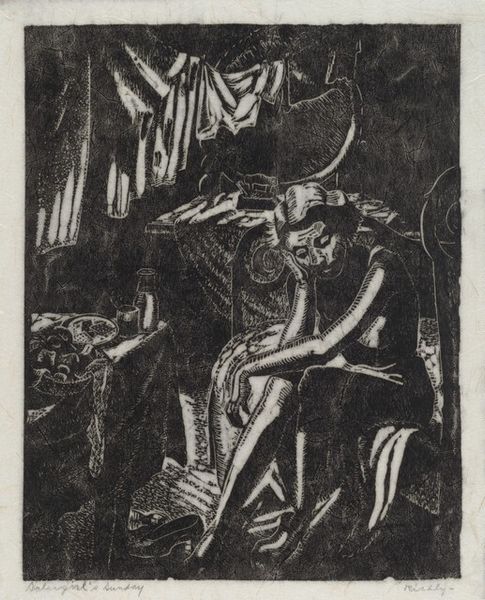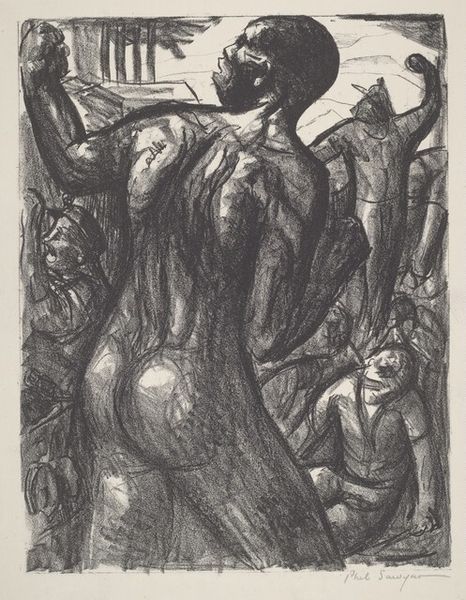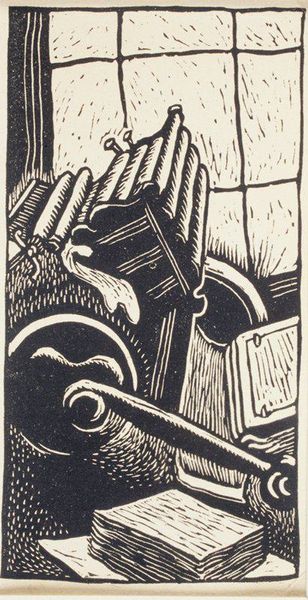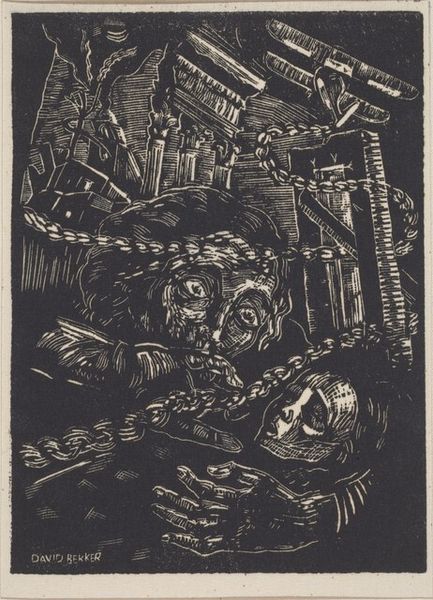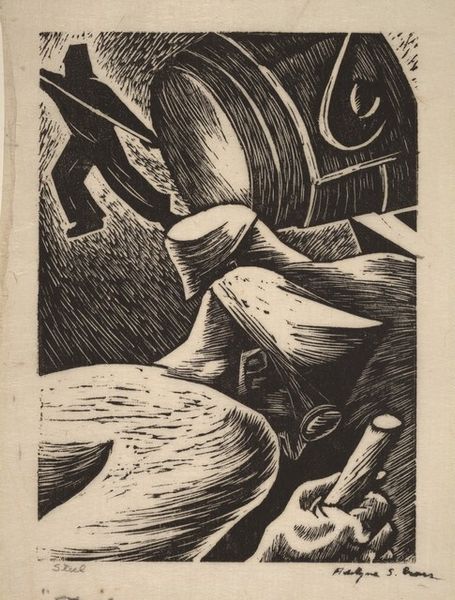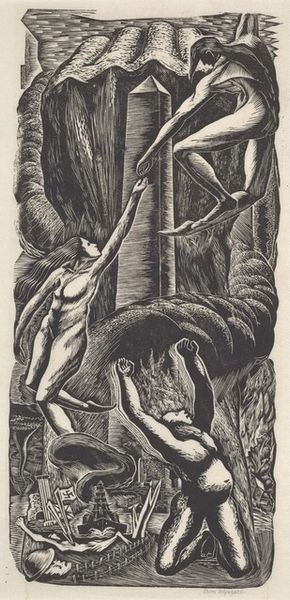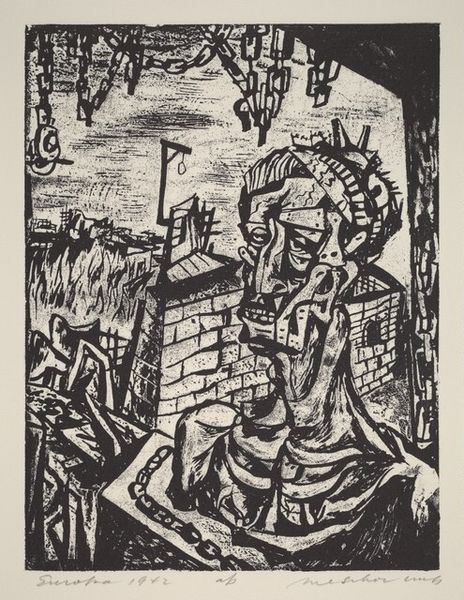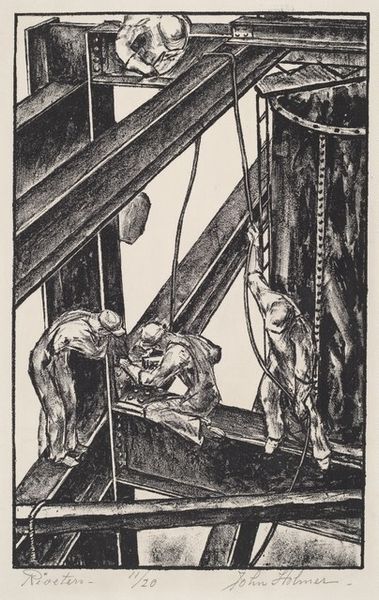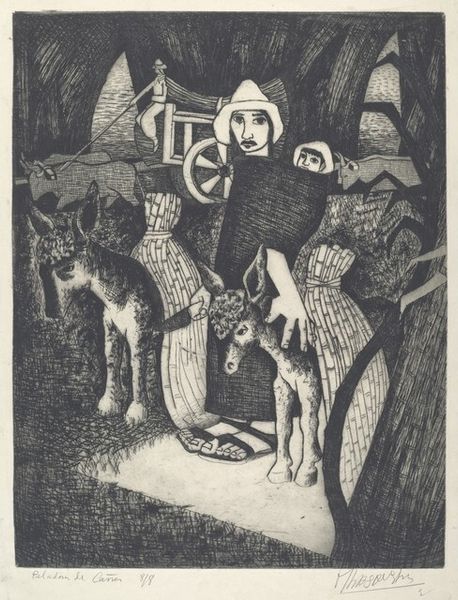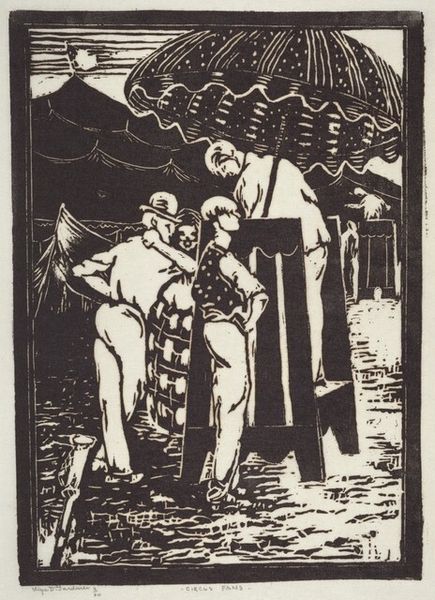
print, woodcut
#
art-deco
# print
#
caricature
#
figuration
#
social-realism
#
woodcut
#
history-painting
#
realism
Dimensions: Image: 267 x 204 mm Sheet: 341 x 273 mm
Copyright: National Gallery of Art: CC0 1.0
Curator: This dramatic woodcut print, circa 1930, is titled "The Tank Worker," and it comes to us from the hand of Charles Turzak. I’m immediately struck by the stark contrast and monumental feel of the figure. Editor: It does command your attention. I'm reminded of those WPA murals, but with a slightly different emphasis. It’s definitely not the typical heroic worker narrative. Curator: Well, let's consider the historical context. This work was created during a time of great industrial growth and also the Great Depression. It reflects the concerns about labor and the changing social fabric of the nation. We can't ignore the aesthetic connections either; this feels closely aligned with social realism, as a movement that sought to portray everyday life, often with a critical edge. Editor: That's undeniable. And thinking about labor, that brings a lot of questions. The artist depicts him powerfully. Yet, his near nudity seems so disconnected from the reality of heavy industry. Is it a comment on the dehumanization of the worker by industrial machinery, or is something else entirely at play? It’s hard to get a firm grip without that immediate connection to a more literal social narrative. Curator: Perhaps it's less about strict representation and more about a symbolic assertion of the worker's strength and endurance against a backdrop of these overwhelming industrial forces. The figure’s muscular physique, though perhaps romanticized, is situated right in the center of industrial expansion. Also the high contrast that can be seen within Art Deco design. In addition, we can understand Turzak as a first-generation immigrant; he had a deep understanding of both worlds and was eager to contribute to cultural identity of American art during that time. Editor: All points well taken. But I also wonder about the reception of the image at the time. I feel that it sits at an interesting intersection of the time’s aesthetics. We tend to imagine socialist realism as existing on the political left. So, where does the celebration of hard, physical labor sit within these ideological discourses, particularly amidst global power shifts? Curator: It's an invitation to unpack those layers. To examine the various cultural, economic, and social undercurrents in his artwork as we seek to bring together a larger more complete portrait of history in the public arena. Editor: Indeed. It's been helpful to delve into the complexities Turzak’s print reveals.
Comments
No comments
Be the first to comment and join the conversation on the ultimate creative platform.
